The Rise of "Lumpy Dumpy" Design: A Review of Faye Toogood’s show at Friedman Benda
Faye Toogood’s Assemblage 7: Lost and Found II at Friedman Benda explores themes of time, loss, and rediscovery through monumental forms crafted from English oak and Purbeck marble. In discussing the show on a recent podcast, Toogood described the collection as a meditation on aging, preservation, and the relationships between forms—how they resemble bodies “finding one another” or “being together.” These intentions and her tactile approach to materiality provide a compelling conceptual foundation for the exhibition. However, the execution often falls short of these ambitions. The forms, textures, and proportions rely heavily on familiar design tropes, aligning with what I’ve come to call the "lumpy dumpy" aesthetic: a genre of oversized, blocky, and deliberately crude objects that position anti-craft as high craft.
The term "lumpy dumpy" captures a contemporary design trend defined by rugged textures, exaggerated forms, and a deliberate rejection of refinement. Designers in this space lean heavily on natural materials—wood, stone, clay—and use imperfection as both a statement and a surface treatment. At its best, this aesthetic challenges our preconceived notions of beauty, inviting us to find value in the raw and unfinished. At its worst, it becomes a visual shorthand—relying on calculated imperfection to evoke depth rather than meaningfully engaging with material or form. Toogood’s work exemplifies this tension. While her use of historically significant materials is conceptually rich, the resulting forms often feel static, leaning on their weighty presence and surface irregularities to convey meaning.
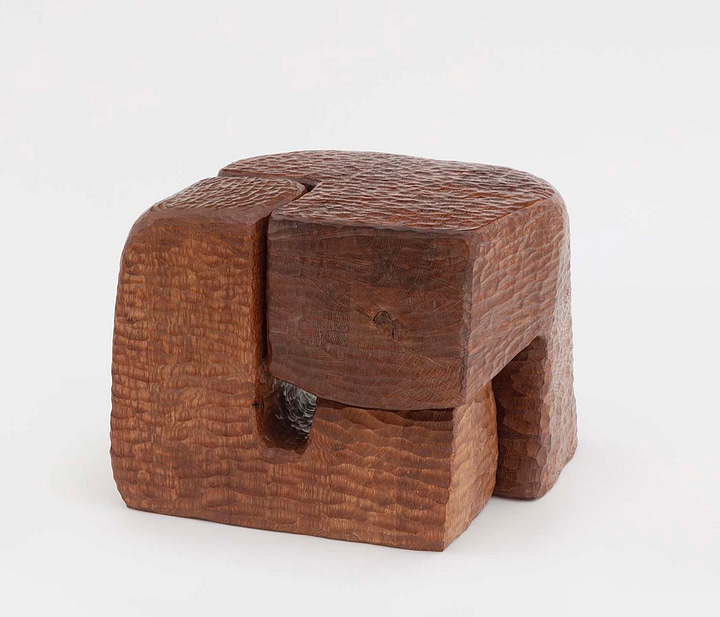
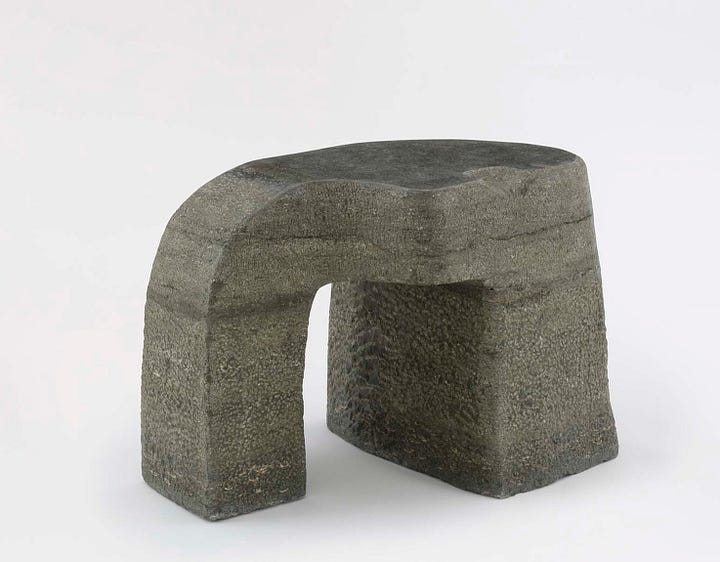
Further complicating the work's conceptual ambition is the commercial nature of its production. The exhibition features multiple editions of the same pieces, with some produced in quantities as high as 20. For instance, Cairn is available as an edition of 20, while other works are limited to editions of eight. These high edition sizes raise questions about Toogood’s direct involvement in the making of the pieces. While she may model the original forms, the actual carving and fabrication are likely executed by skilled craftspeople. This outsourcing, while standard in collectible design, risks creating a sense of detachment between the artist’s narrative intent and the final objects. As a result, the soul of the work feels diminished, caught in the space between concept and production. Rather than a genuine exploration of form, the repetition of identical shapes in different materials—oak and marble—suggests a focus on marketable, collectible objects rather than a deeper investigation into the boundaries of art furniture.
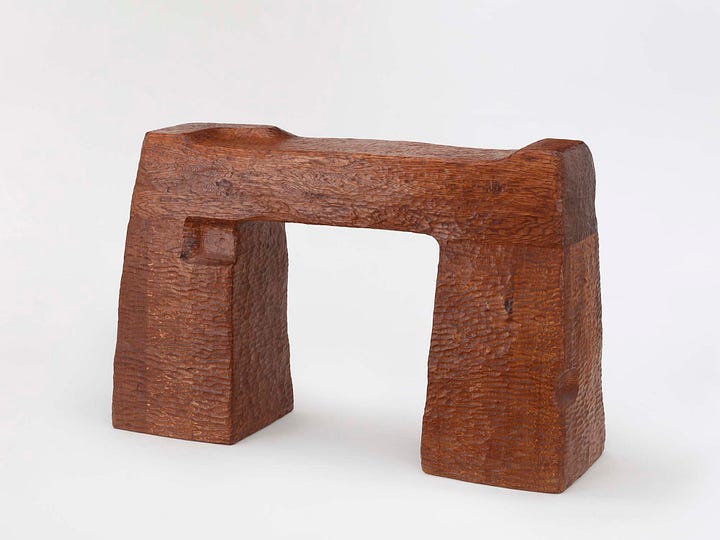
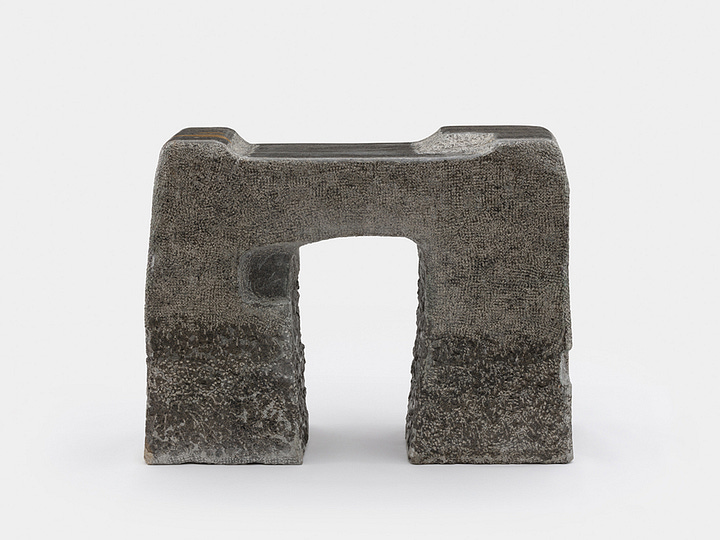
Toogood’s influences—from Brutalist architecture and wabi-sabi philosophy to the sculptural legacies of Isamu Noguchi, Constantin Brancusi, and Wendell Castle—are visible throughout the collection. These references are compelling, but the work rarely transforms or challenges them. Noguchi and Brancusi distilled form and material into poetic, transcendent expressions, while Castle created playful, experimental works that blurred the boundaries of art and design. By comparison, Toogood’s pieces feel constrained, their forms gesturing toward these influences without capturing their vitality. The hand-chiseled Purbeck marble and shellacked oak have an undeniable presence, but the deliberate roughness of the forms risks feeling more performative than profound.
The exhibition frames Toogood’s carving process as akin to an "archaeological dig," uncovering treasures buried within the material. While this metaphor aligns with the rough, artifact-like quality of the work, it also highlights the limitations of this aesthetic language. The forms, textured surfaces, and heavy materials evoke a prehistoric sensibility but rely on their materiality for impact rather than engaging deeply with the themes of aging or preservation. The visual language of “rediscovery” feels static, lacking the dynamism or emotional resonance that might elevate the work beyond its surface appeal.
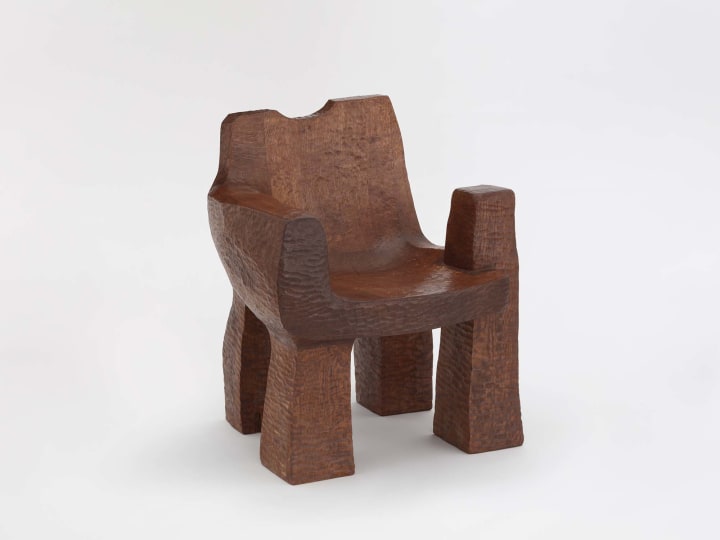
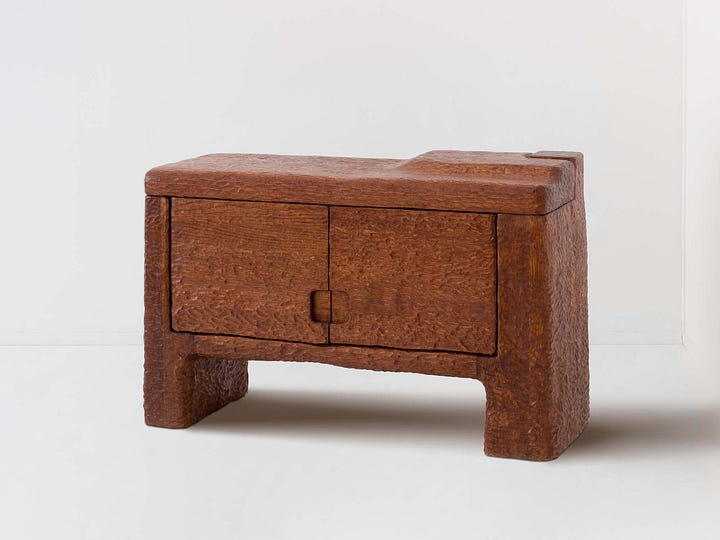
The broader context of the "lumpy dumpy" movement complicates Toogood’s exhibition. What once felt like a radical departure from modernist minimalism has, in recent years, become an increasingly predictable aesthetic: bulky forms, earthy materials, and textures that emphasize imperfection. While individual pieces in this trend can command attention, the style's ubiquity dilutes its originality. Toogood’s work, while skillfully executed, reflects the saturation of this aesthetic rather than pushing it forward. The forms feel frozen within this design language, mirroring contemporary trends but rarely transcending them.
For Toogood and her contemporaries, the challenge is no longer to perfect the "lumpy dumpy" style but to move beyond it—to find new ways of engaging with material, form, and function that feel as bold and innovative as this aesthetic once did. Assemblage 7: Lost and Found II remains an impressive, if somewhat predictable, reflection of this moment in design. It leaves us with an important question: When does an aesthetic become a trope? And, more importantly, what comes next?





